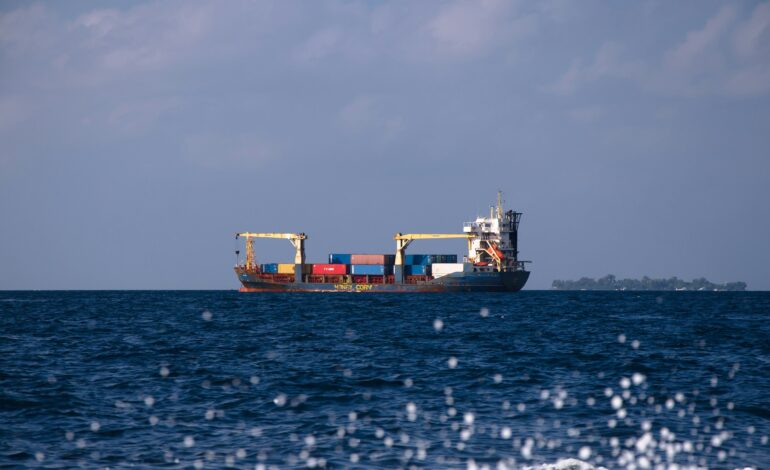
Innovative Financing Solutions for Clean Marine Fuel Projects
The maritime industry is undergoing a significant transformation as it seeks to meet stringent environmental regulations and reduce its carbon footprint. The transition to clean marine fuels, such as LNG, hydrogen, and biofuels, is essential for achieving sustainability goals. However, the high capital costs and financial risks associated with these projects pose substantial challenges. This article explores innovative financing solutions that can help drive the development and adoption of clean marine fuel projects.
The Need for Innovative Financing
Clean marine fuel projects often require significant investment in infrastructure, research and development, and new technologies. Traditional financing mechanisms may not be sufficient to cover these costs or address the associated risks. Therefore, innovative financing solutions are crucial for mobilizing the necessary capital and fostering a sustainable maritime industry.
Innovative Financing Solutions
- Green Bonds:
- Overview: Green bonds are debt instruments specifically earmarked to raise funds for projects with environmental benefits. These bonds attract investors interested in sustainable development.
- Application: Shipping companies and port authorities can issue green bonds to finance the construction of LNG bunkering facilities, hydrogen production plants, and biofuel supply chains.
- Benefits: Green bonds offer lower interest rates and attract a broad investor base focused on sustainability, making them an attractive financing option.
- Public-Private Partnerships (PPPs):
- Overview: PPPs involve collaboration between government entities and private sector companies to fund, build, and operate infrastructure projects.
- Application: Governments can partner with private investors to develop clean fuel infrastructure, such as LNG terminals and hydrogen bunkering stations, sharing both risks and rewards.
- Benefits: PPPs leverage public resources and private sector efficiency, accelerating project development and reducing financial burdens on individual stakeholders.
- Sustainable Shipping Funds:
- Overview: These funds pool capital from various investors to finance projects that promote sustainable shipping practices and reduce environmental impact.
- Application: Sustainable shipping funds can be used to support the retrofitting of existing vessels with cleaner technologies, the development of alternative fuel supply chains, and the deployment of zero-emission ships.
- Benefits: By aggregating resources, these funds reduce investment risks and provide the necessary scale to undertake large clean fuel projects.
- Blended Finance:
- Overview: Blended finance combines public, private, and philanthropic capital to de-risk investments in sustainable projects.
- Application: Public grants and concessional loans can be used to lower the financial risk for private investors in clean marine fuel projects, making them more attractive.
- Benefits: This approach leverages limited public funds to mobilize larger volumes of private investment, enhancing the overall impact of available capital.
- Carbon Pricing Mechanisms:
- Overview: Carbon pricing, including carbon taxes and cap-and-trade systems, creates economic incentives for reducing greenhouse gas emissions.
- Application: Revenues generated from carbon pricing can be reinvested into clean marine fuel projects, supporting infrastructure development and technological innovation.
- Benefits: Carbon pricing internalizes the environmental costs of shipping emissions, encouraging the adoption of cleaner fuels and technologies.
- Maritime Green Banks:
- Overview: Specialized financial institutions focused on funding environmentally sustainable maritime projects.
- Application: Maritime green banks can provide low-interest loans, guarantees, and other financial products tailored to clean marine fuel projects.
- Benefits: These institutions can fill financing gaps, offer expertise in sustainable maritime investments, and catalyze private sector participation.
Case Studies and Examples
- Poseidon Principles:
- Overview: An initiative by major shipping banks to integrate climate considerations into lending decisions, promoting low-carbon shipping investments.
- Impact: By aligning loan portfolios with decarbonization goals, banks encourage shipping companies to adopt cleaner fuels and technologies.
- Global Maritime Forum’s Getting to Zero Coalition:
- Overview: A multi-stakeholder initiative aimed at developing commercially viable zero-emission vessels by 2030.
- Impact: The coalition mobilizes resources from governments, industry, and finance to support research, development, and deployment of clean marine fuels.
- European Investment Bank (EIB):
- Overview: The EIB provides funding for sustainable maritime projects, including LNG infrastructure and alternative fuel research.
- Impact: EIB’s financial support has enabled the development of key clean fuel projects across Europe, demonstrating the role of development banks in fostering sustainability.
Future Outlook and Strategic Considerations
- Enhanced Collaboration:
- Stakeholder Engagement: Successful financing of clean marine fuel projects requires collaboration among governments, financial institutions, shipping companies, and technology providers.
- Global Partnerships: International cooperation and partnerships can facilitate knowledge sharing, standardize regulatory frameworks, and mobilize cross-border investments.
- Policy Support:
- Incentives and Subsidies: Government policies that provide incentives, such as tax breaks and subsidies for clean fuel projects, can stimulate private investment.
- Regulatory Frameworks: Clear and consistent regulations are essential for reducing investment risks and ensuring market stability.
- Technological Innovation:
- R&D Investment: Continued investment in research and development is crucial for advancing clean fuel technologies and reducing costs.
- Scalability: Scaling up successful pilot projects and innovations to commercial levels will require substantial financial resources and strategic planning.
Conclusion
Innovative financing solutions are pivotal in overcoming the financial barriers to clean marine fuel projects. By leveraging green bonds, PPPs, sustainable shipping funds, blended finance, carbon pricing mechanisms, and maritime green banks, the maritime industry can accelerate the transition to sustainable energy sources. These approaches not only mitigate financial risks but also foster collaboration, innovation, and environmental stewardship. As the industry navigates towards a greener future, strategic financial investments will play a crucial role in achieving sustainability goals and ensuring the long-term viability of maritime transportation.





